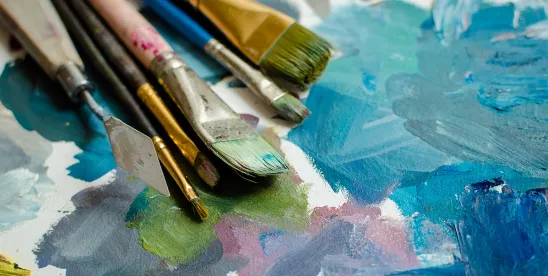As the art market grows in value and complexity, so too do the legal challenges surrounding authenticity. The Knoedler Gallery scandal revolved around the sale of approximately 40 Abstract Expressionist paintings that were discovered to be forgeries.[1] The scandal unfolded when it was revealed that Pei-Shen Qian, a Chinese art forger, had created fake paintings, which were then passed off as works by famous artists like Robert Motherwell, Jackson Pollock, and Mark Rothko, among others. In this scandal Pei-Shen Qian produced fake paintings, attempting to imitate the styles and techniques of other artists. Glafira Rosales, who had a close relationship with Knoedler Gallery president Ann Freedman introduced the forgeries to Freedman and convinced her of their authenticity.[2] As a result, Knoedler Gallery sold the forgeries as genuine, earning millions in profit. When the authenticity of the paintings came into question, collectors filed a wave of lawsuits, alleging fraud, breach of contract, and negligent misrepresentation.[3]
These cases raised questions about the standard of due diligence in art sales. Plaintiffs argued that the gallery failed to conduct reasonable authentication efforts and ignored red flags that would have alerted a responsible dealer. The defense contended that Knoedler relied on expert opinions and lacked intent to deceive – raising the issue of whether negligence, not fraud, can still result in liability.
A recent lawsuit filed in Miami-Dade County Circuit Court[4] centers on the sale of $6 million in forged Andy Warhol paintings and raises important questions about the extent of due diligence required of art buyers. The plaintiffs, the Perlman family with no specialized art training, allege that the gallery director deliberately misrepresented the authenticity of the works by promising verification from the Andy Warhol Foundation – only to send them falsified confirmation from a fake email address.[5] When the family attempted to resell the works, including pieces from Warhol’s Mao and Marilyn series, issues emerged as to their authenticity. The Perlman’s lawsuit centered on fraudulent misrepresentation, breach of warranty, breach of contract, and conversion, all civil causes of action rooted in the allegation that Roberts knowingly sold forged artwork under the false pretense of authenticity.[6] However this case also highlights the limits and expectations of due diligence in the art market.[7] While sellers have a duty not to defraud buyers, there is also the question of what steps the buyer took to verify the authenticity of high-value work. The Perlman’s argue they relied on representations allegedly backed by forged documentation and impersonations, but some contend they should have independently consulted recognized experts of authentication boards. This tension between buyer reliance and buyer responsibility is common in art related litigation, where authenticity is difficult to prove or disprove definitely.
The Knoedler and Miami forgery cases highlight the evolving legal standards around authenticity and the competing expectations placed on both sellers and buyers. To avoid liability, art dealers and galleries must take affirmative steps to verify provenance – relying solely on informal representations or the absence of obvious red flags may no longer be sufficient. Internal documentation, third-party expert evaluations, and transparency about any gaps in authenticity can serve as critical protections in the event of litigation.
Buyers, particularly those without specialized art expertise, should not assume representations – especially verbal assurances or unverified documents – are definitive. Independent authentication, review by legal counsel, and written warranties are all essential tools for minimizing exposure. Courts increasingly examine whether parties exercised reasonable diligence in context, not just whether fraud occurred. In a legal landscape where negligence
alone may give rise to substantial liability, both buyers and sellers must exercise heightened diligence – because in the complex and high-value world of art transactions, the consequences of inauthenticity are often realized only after harm has occurred.
Footnotes
[1] Eileen Kinsella, The Big Fake: Behind the Scenes of Knoedler Gallery’s Downfall, ARTNEWS (Feb. 19, 2012, 2:00 PM).
[2] Treasures on Trial, Knoedler Gallery, WINTERTHUR MUSEUM, GARDEN & LIBRARY, (last visited June 5, 2024).
[3] Bryan Burrough, The Art of the Con, VANITY FAIR (May 2012).
[4] Artificial Intelligence Law Bulletin, SHOOK, HARDY & BACON LLP (Jan. 2025).
[5] Brett Sokol, Miami Art Dealer Accused of Selling Fraudulent Warhols, N.Y. TIMES (Apr. 11, 2025).
[6] Daniel Cassady, Miami Art Dealer’s Fine Art Gallery Raided by FBI Following Indictment, THE ART NEWSPAPER (Apr. 14, 2025).
[7] Margaret Carrigan, Miami Art Dealer Charged for Peddling Fake Andy Warhols, ARTNEWS (Apr. 15, 2024, 12:38 PM).



 />i
/>i

